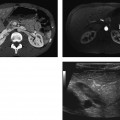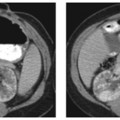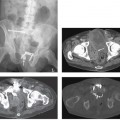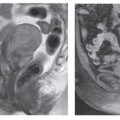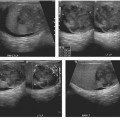CASE 11 A 71-year-old man with long-standing cirrhosis and chronic hepatitis B presents with general malaise, weight loss, and increased serum levels of alpha fetoprotein. Fig. 11.1 Arterial phase CT image shows multiple arterially enhancing lesions (arrows) within the hepatic parenchyma. Arterial phase computed tomography (CT) image (Fig. 11.1) shows multiple arterially enhancing lesions within the hepatic parenchyma. Hepatocellular carcinoma (HCC) HCC represents the most common hepatic primary malignancy, mostly occurring in the elderly population (6th–7th decade) and earlier in patients with underlying hepatic disease. In the United States, the prevalence of HCC has been increasing in the last few years and is currently estimated at 4 cases per 100,000 (0.2–0.8%). Worldwide, this neoplasm is more common (in particular in Asia and Africa) and is usually associated with either chronic hepatitis B and C or aflatoxin exposure. Early HCC is a silent, completely asymptomatic lesion. Patients with advanced stage disease may experience abdominal pain, general malaise, and fever. The aggressive form of HCC as seen in high-incidence countries may present with bleeding, hepatic rupture, and hemoperitoneum. Laboratory test findings may include an increased level of alpha fetoprotein. HCC is locally invasive and tends to grow within the portal vein system rather than metastasize in a distant organ, typically causing portal vein thrombosis. However, distant metastases have also been described in lung, adrenal glands, lymph nodes, and bone. Invasion of the biliary tree is less common, although large lesions may present with jaundice. HCC may also be associated with paraneoplastic syndromes, resulting in hypercalcemia, erythrocytosis, hypoglycemia, and hirsutism. Several predisposing factors have been identified, including alcoholic cirrhosis, chronic hepatitis B and C, exposure to toxin (aflatoxin, Thorotrast, and oral contraceptive), and metabolic diseases, which usually account for the majority of cases seen in younger patients (galactosemia, glycogen storage disease, congenital biliary atresia, and hemochromatosis).
Clinical Presentation
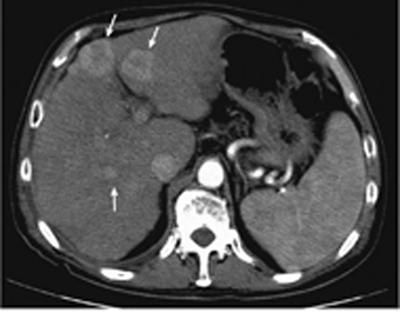
Radiologic Findings
Diagnosis
Differential Diagnosis
Discussion
Background
Clinical Findings
Complications
Etiology
Imaging Findings
Stay updated, free articles. Join our Telegram channel

Full access? Get Clinical Tree


